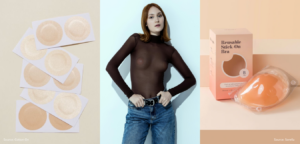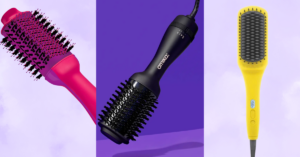Hair
Let’s Talk About Those Random, Rogue Hair That Everybody Secretly Has
We’ve all got a few rogue body hair that doesn’t follow the rules: The straggler on your otherwise naked upper...
By: Beauty Insider Journalist / September 19, 2021

We’ve all got a few rogue body hair that doesn’t follow the rules: The straggler on your otherwise naked upper arm; the odd loner on top of the ear. What happens beneath the skin that causes these hairs to tower above the rest? They’re longer, coarser, curlier, and generally darker than their adjacent fuzz. It’s one of life’s vexing puzzles, but there’s a logical explanation for why we get them.
Personally, I have one little bugger that annoys me to the core. When I was young, I fell and got a scar on my chin. Next thing you know, once a month, I’m spending my time in front of the mirror, trying to pluck a dark, silky hair strand. Additionally, I have another behind my thigh and I just go, “what was the reason???”
With that, in this article, Beauty Insider is breaking what those pesky rogue hair are, why you get them and how to remove them.

Rogue hairs, no matter how strange they appear the first time you see one, are statistically not as unusual as they appear. Despite how prevalent rogue hairs are, finding information on why they appear when and where they do, or what they could imply about our bodies, is surprisingly difficult.
Contents
Who Gets Them?
Rogue hairs may be seen in men and women of all ages and races, according to anecdotal data. They do, however, appear to be becoming more frequent as people become older. They are most commonly found on the back, earlobe, armpit, and tip of the nose. Rogue hair, on the other hand, may appear almost anywhere; in a way, they have their own thoughts.
Why Do We Get Them?
It’s possible that it’s just a harmless gene mutation. It’s possible that a single hair follicle diverged from its regular course if you locate one long, black hair at random. Hair properties such as length and diameter are determined by the growth phase of its lifespan.
Therefore, a gene mutation in a single follicle can result in longer, darker hair at any time owing to trauma or environmental factors. It will continue to develop in this manner once it has transformed.
Furthermore, your hormones are most likely to blame. Hair development in previously hairless regions, such as the cheeks, lower face, and around the areolas, is common among women in their 40s and 50s. During menopause, oestrogen levels drop; causing a disturbance in the estrogen-to-testosterone balance, which can cause hair to grow darker or longer.
With that, androgens are the primary hormone involved in hair growth, and they are found in both males and females. Males, on the other hand, have greater amounts of androgens (testosterone is an androgen), and when the female body generates too many androgens, she may acquire more body hair than is typical.
Does Rogue Hair Grow Faster?
This is most likely a perception issue; the hair grows at the same rate as other hairs, but its colour, thickness, and position are distinct enough that it appears to stand out. Varying hairs on our body grow and shed at somewhat different rates and lengths. Rogue hairs may just grow quicker and longer before shedding naturally than the hairs we’re used to in one location, aggravating any possible general perception effects.
Should I Be Worried?

Rogue hairs are nearly always benign, no matter what causes them. Hirsutism is a condition in which a large number of rogue hairs appear in one area in a short period of time. This is an indication that one’s sex hormones are out of balance.
However, it has the potential to cause diseases such as polycystic ovarian syndrome, which requires medical care. Whereas, men, on the other hand, see them as simply another strange part of being a hairy human being with a stochastic body.
How To Get Rid Of Them?
Individual hairs can be plucked or a depilatory can be used

Plucking random hair may be preferable to shaving it since plucking allows for more time for regrowth. Depilatory creams are another viable option, as they destroy hair at the skin’s surface without causing any discomfort. Some epilators also diminish hair density and length, causing it to regrow lighter, shorter, and less often. However, using the ol’ trusty tweezers can do the job just as well.
Make use of hair removal equipment that you have at home
With the introduction of FDA-approved do-it-yourself laser and light-based hair removal devices; these troublesome hairs are now simpler to treat at home. As long as you follow the manufacturer’s instructions, I believe these systems are safe.
We propose a simple dermaplaning instrument for the face that has been clinically shown to reduce hair growth in as little as four weeks; you can conduct a full-body treatment in 10 minutes or less!
Consider laser hair removal

If DIY hair removal isn’t giving you the results you want, it’s time to consider laser hair removal. The light damages the bulb of the hair follicle and is considered the gold standard for those with darker hair. For people with particular hair or skin tones, certain at-home hair removal techniques aren’t recommended.
Electrolysis could be an option
Finally, electrolysis works by delivering a very small quantity of electricity to the hair follicle’s base; destroying it and permanently removing undesired hair. Electrolysis is the sole method for permanently removing hair. While lasers can temporarily reduce these hairs, hormonally regulated hairs almost always grow back.
















